Modernity and the Mediterranean
From Ako to Bizen Katakami around the Inland Sea
The hydrangea petals were already curling at the edges, turning pale brown like old maps in the relentless heat. I’d been disappointed with Ako, expecting an Inland Sea paradise after a day of relentless walking. Today it looked… okay. The metal pipework and chimneys of industry I now expected. The edge of the industrial zone had strips of parkland with elderly runners and shady trees. I needed those trees and that shade, because already the heat was throbbing, any unshaded pavement gave off heat like a matsuri grill. Under the trees I heard my first cicada of the summer.
Today was a lull in the rainy season, the sky slowly clearing to hazy sunshine as I left the park and Ako behind and crossed an area of paddy fields. The rice was no longer single stalks like newly-grown hair, but tufts like a worn-out toothbrush. In the background, the cement factory made a noise like a giant but distant washing machine.
An old man brushed his teeth vigorously while leaning on his white kei truck and looking at his pigeons. They were crowded expectantly in their loft. They didn’t look like racing pigeons — prize birds with bulging chests, just the normal winged rats you see in any town or city.

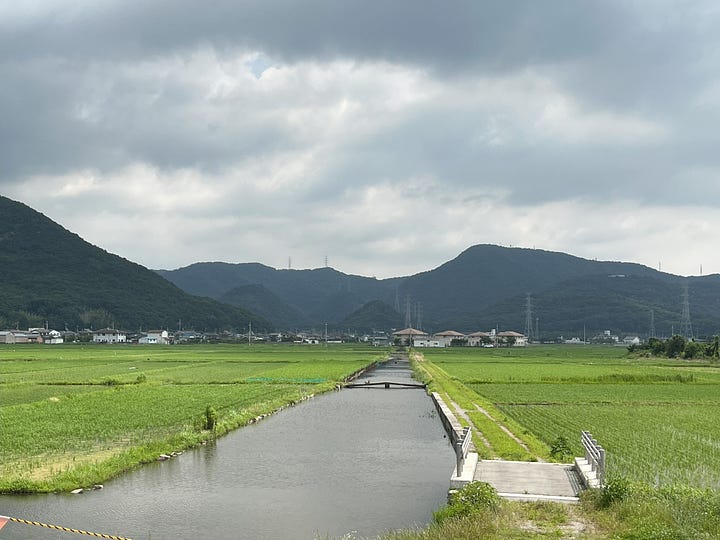
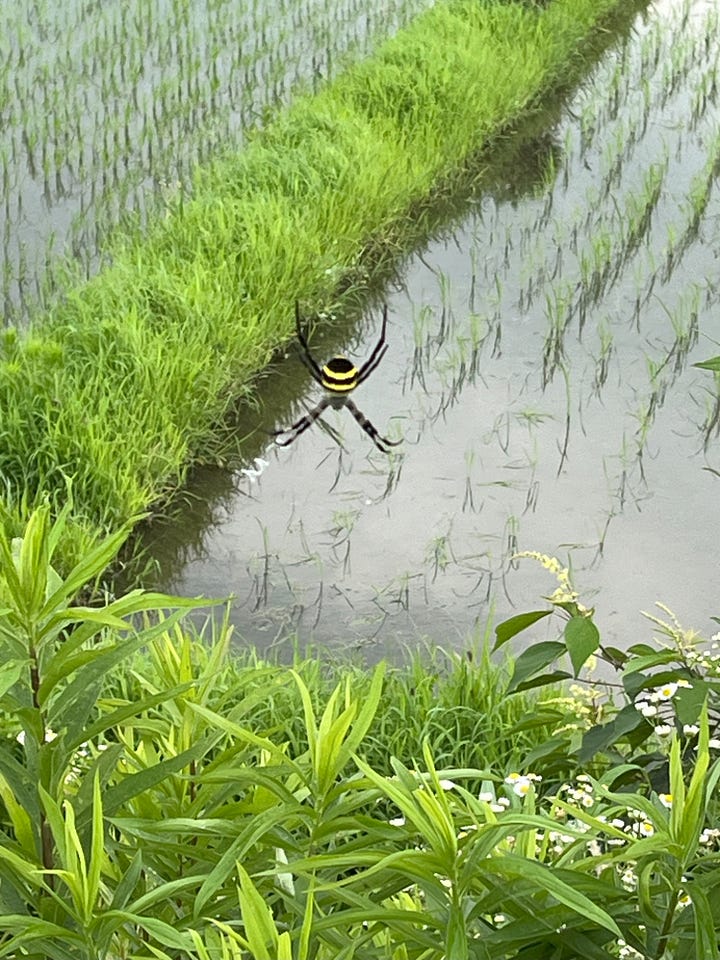
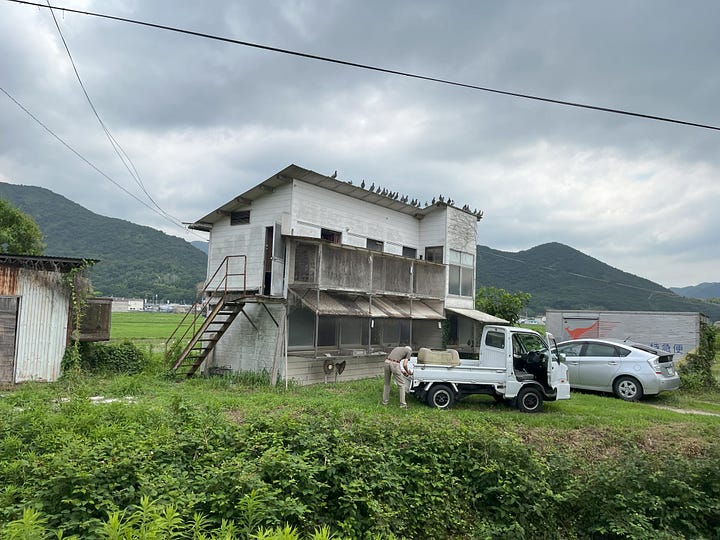
It was only nine-thirty, but I was already hungry. Time for second breakfast, a convenience-store-purchased (Seven-Eleven, naturally) egg and ham sandwich, one of two I had bought outside Ako station, which I munched while perched on a river wall.
The only way across the maze of channels that surrounded Ako was along the main road, past more industry (Mitsubishi Electric Systems), and then up, over a pass, under a gravel conveyor and back down. I stopped beneath a loquat tree and drank half a bottle of water. The sun was strong enough now for me to break out my sunhat and slather on sunscreen.
I turned left. The Inland Sea was just ahead, this was my first chance to see it. As I rounded the bend between two hills I saw… a concrete wall. This should have been obvious. With no concrete wall, the valley would be regularly flooded with seawater and there would be no rice paddies and no village.
I mounted the concrete wall and gazed at the Inland Sea. This is what I had expected back in Ako. Wooded islands rose steeply from blue-green waters. Dark, once-jagged rocks, protruded like shark fins above the gentle waves. Through the haze one island had a pale scar where a quarry had ripped through the trees. Okay, don’t look at that. A ship slowly slid between the islands. This was the Inland Sea.
Donald Richie, in his book “The Inland Sea”, is also disappointed the first time he sees it on his trip. He has come here to escape “hot, crowded, smog-covered Tokyo”, “steaming Osaka”, and “poor, fragmented Kyoto”. He looks “eagerly for the sea. On the trip from Kobe to Himeji [he] saw little enough of it. A glimpse of its eastern reaches, as yet islandless, on the other side of factory chimneys, fertilizer plants, salt works, and the belching fogs of heavy industry.” When he reaches the port, from where he will take a ferryboat out to distant islands, he complains it is “like a deserted lot, piled with rusting refuse, boilers, wrecked autos.” He is travelling in the high-growth era, and the human-scale world he loves is disappearing before him. The Inland Sea will be his escape.
I sat on the concrete steps, sheltered from the sun by a protrusion in the concrete wall and drank more water. Then, I was back on my way on a road that precisely followed the coastline. I was soon overtaken by an elderly man walkingu. This is not the same as walking. Walkingu involves a slightly faster pace, swinging the arms more, and the correct clothing (a lightweight track suit if you’re interested). The elderly man came back, still walkingu. This time he gave a startled “konnichiwa” as he could see me from the front and now realised I was a foreigner.
Vines were creeping across the shingle. Higher up the shore, the rocks were bleached near-white and sharp edged, while at the water’s edge, they were dark, rounded and deeply fissured. Between lay parallel sticks of varying sizes whose brown had long since leached away to a pale grey.
A black kite passed overhead with a sound like a man-made kite — wind strumming over its surface. The vegetation had changed. Gone were the big ring-cupped oaks and camphor trees of inland, now the small-leaved black ridge oak, short, stunted and twisted grew on the steep, rocky slopes. Orange lichen stained their trunks, giving them a hue as if they had been coated with cinnamon powder. It felt like the Mediterranean coast.
With less cloud, the heat really began to build. I stopped more and more often to drink water as I approached the town of Hinase. The coast on the other side of the inlet was completely unspoiled by humans — just forest and beach and sea. I stopped to take in this rare sight.
It was lunchtime. A park in the town of Hinase had the three things I required: a bench, shade, and a vending machine. I ate the other sandwich, then the four raisin bread rolls (excellent value for money at only just over 100 yen). I got one bottle of water from the vending machine, drank it all, then got another for the journey. But I was going to wait it out until two-thirty before I ventured out into the full sun again.
Hinase too had hints of the Mediterranean. An Italian fishing port perhaps, with a little more in the way of cuboid concrete. Blue-green water, rows of white yachts neatly lined up, colourful buildings along the waterfront. Ferries left from here to various islands with advertised activities such as mikan picking, swimming and camping.
That Mediterranean feel is strengthened by the region’s specialisation in citrus fruits. I found kumquat bushes being used as boundary hedges. Farther round the coast, Setouchi is famous for its lemons.
Leaving Hinase, I passed a huge mound of white shells. The area is famous for its oysters, but the shells didn’t look much like oyster shells to me. Past that, a large pachinko parlour on the waterfront. It didn’t have the full on tackiness and garishness that characterise most pachinko parlours, from a distance I thought it was a car show room. So what was my complaint exactly? Industry I could accept as a necessity, it provided jobs. But then so does the pachinko parlour. True, but the pachinko parlour doesn’t really produce anything of value, a quick, possibly addictive, respite from the drudgery of everyday life, that’s all.
When he reaches the Ieshima islands, about 10 kilometres offshore from Ako, Richie is disappointed to discover that modernity is reaching even here. A new hotel has been built on the main Ieshima island, bedrooms with plasticated tokonoma alcoves and table-tennis game rooms. Only the tatami mats are real, everything else is fake, including the beach which is being rebuilt with imported sand. The hotel maids are excited by the progress. How did Richie hope to escape modernity in a culture where the lines between the natural and the artificial are so blurred?

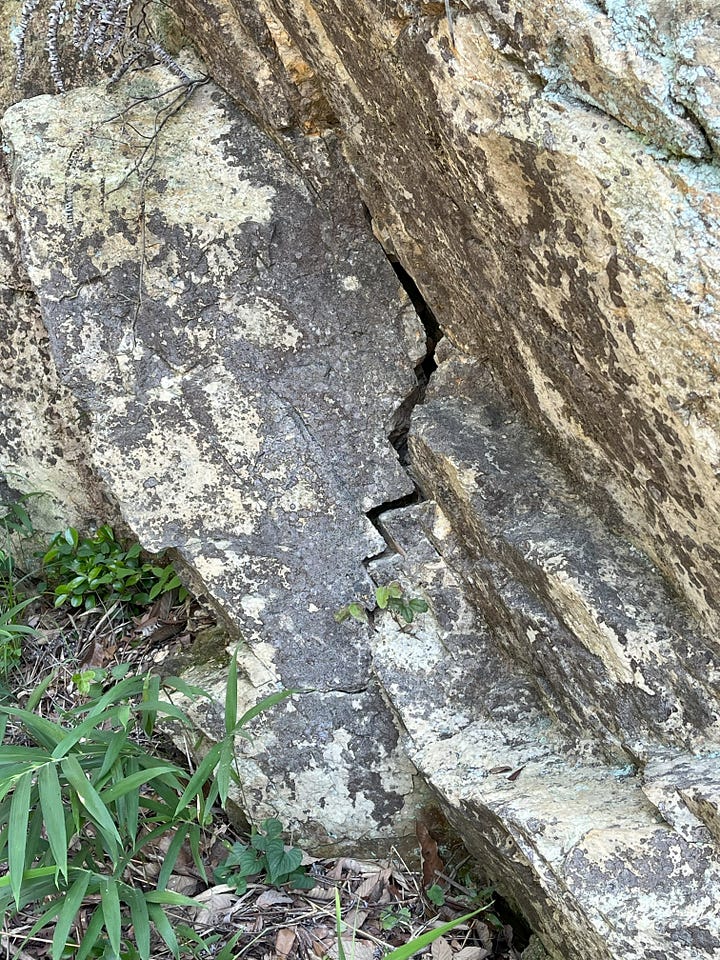
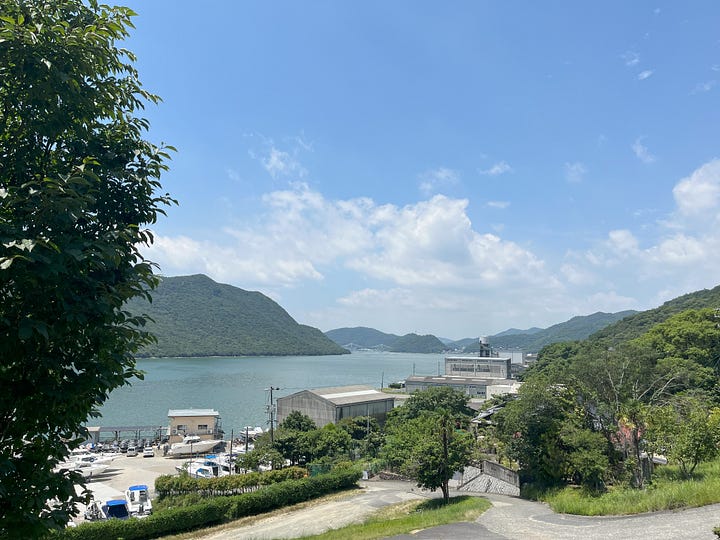

Wherever possible, I avoided the main road, following instead a path between leaning cinder-block walls and a narrow dark concrete channel topped with rusting white railings out of Hinase. On the far side of the channel, steep steps led up to a hidden shrine. No, this isn’t the Mediterranean.
I passed the Bizen Museum of Latin America, trying to imagine what links this area could have with Latin America. It started as a private collection of a fishing net manufacturer in Hinase who sometimes went on business trips to Central and South America, gradually the collection grew so large it was developed into a museum.
By four o’clock I had reached a decision point in a supermarket car park. Continue on along the coast to Bizen Katakami, or go to the nearest station? I drank another whole bottle of water and gazed longingly at the ice-cream vending machine while I made up my mind.
On to Bizen Katakami it was. Past old potteries, their square brick chimneys still standing, past an unironic Jimintou (Liberal Democratic Party) poster asking for votes to help change government, then a big signboard advertising “high native service”. What did this mean? What was none-native service? Was none-native service inherently poor? I figured out they had used the three syllables of Hinase for the English words. They must have been struggling to find something beginning with “na”.

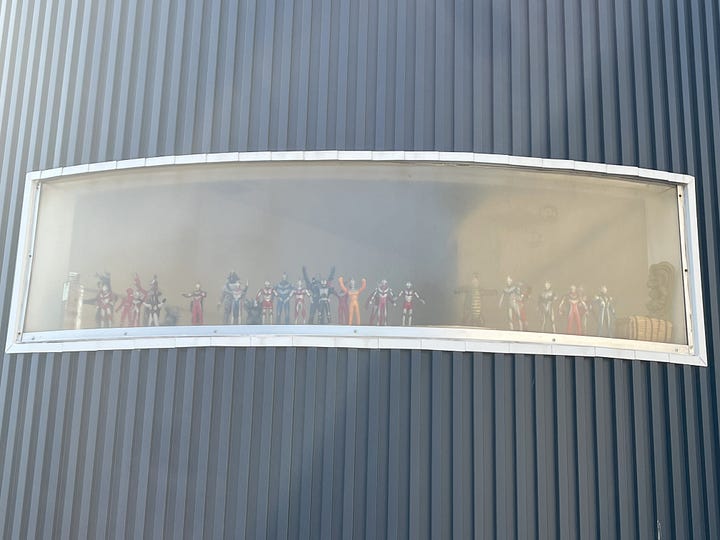
Finally, I made it to Nishi-Katakami station. One of those cute, single-track, old train, highly-Instagrammable stations. I tried to take a picture of the train as it came into the station, but failed miserably. I got on, and surreptitiously stuffed my face with salted nuts as the train rocked along through tunnels back towards home.


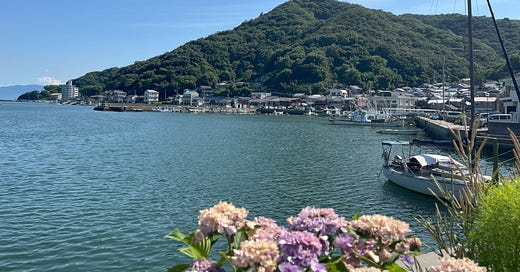


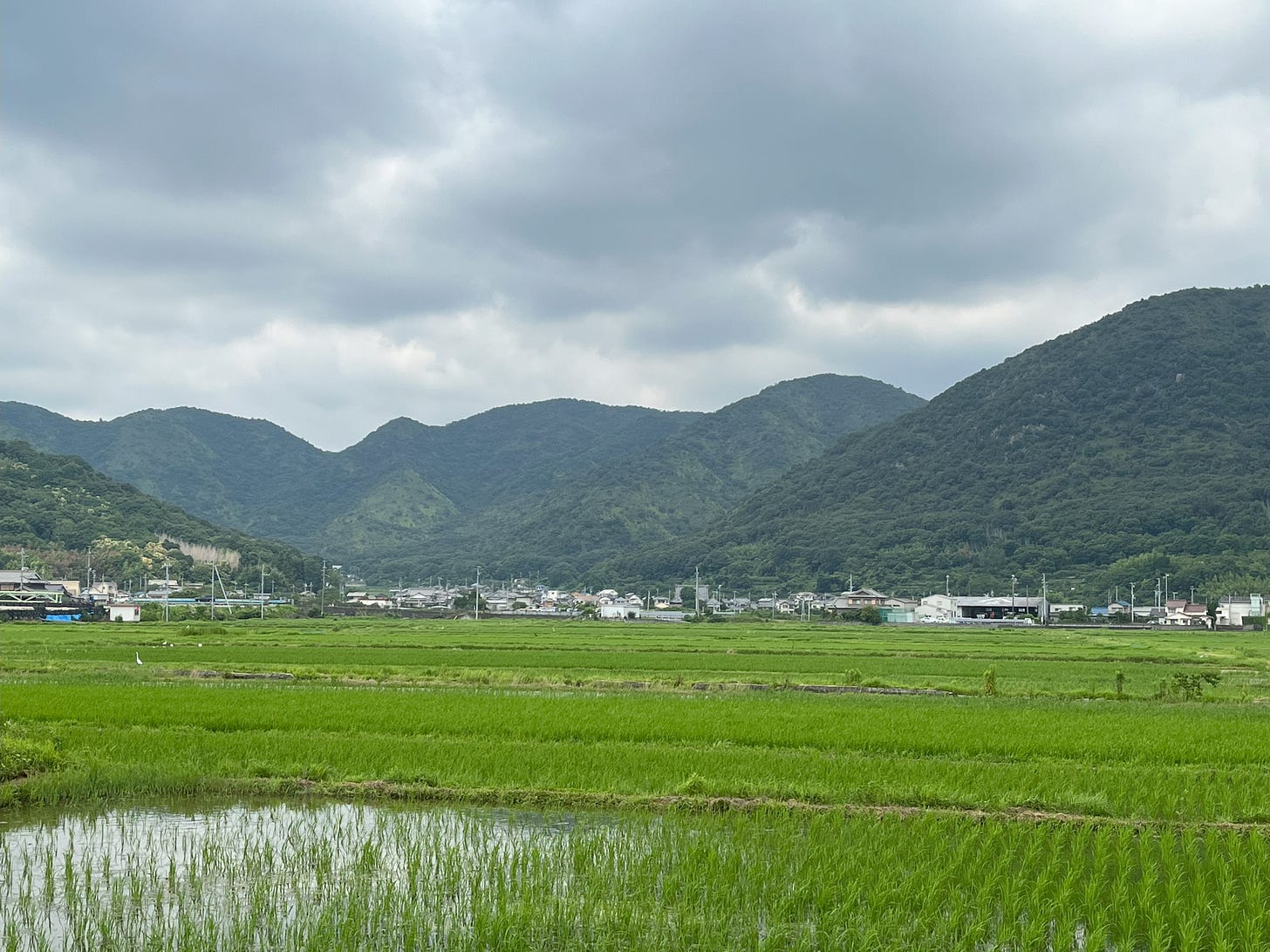
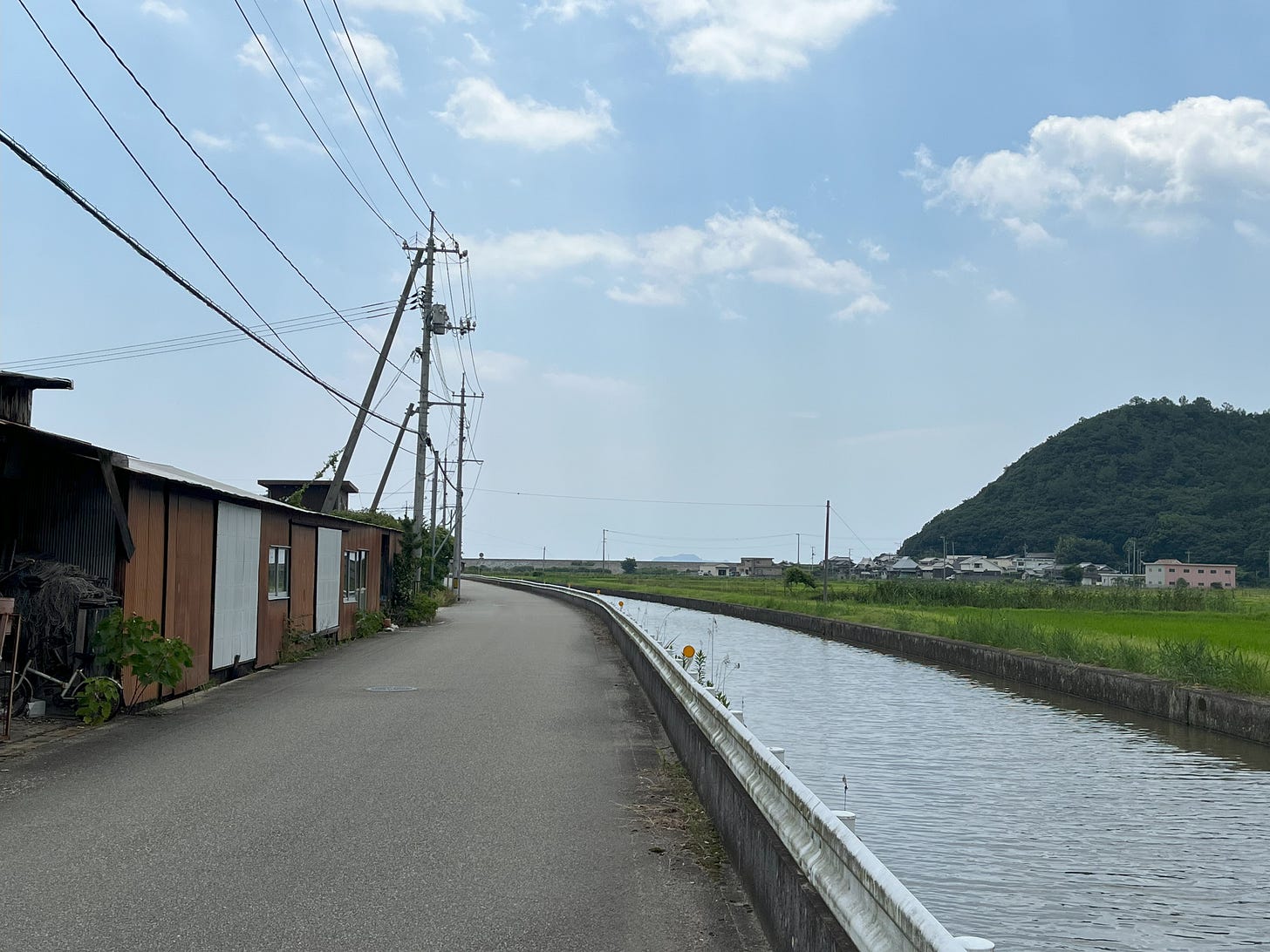
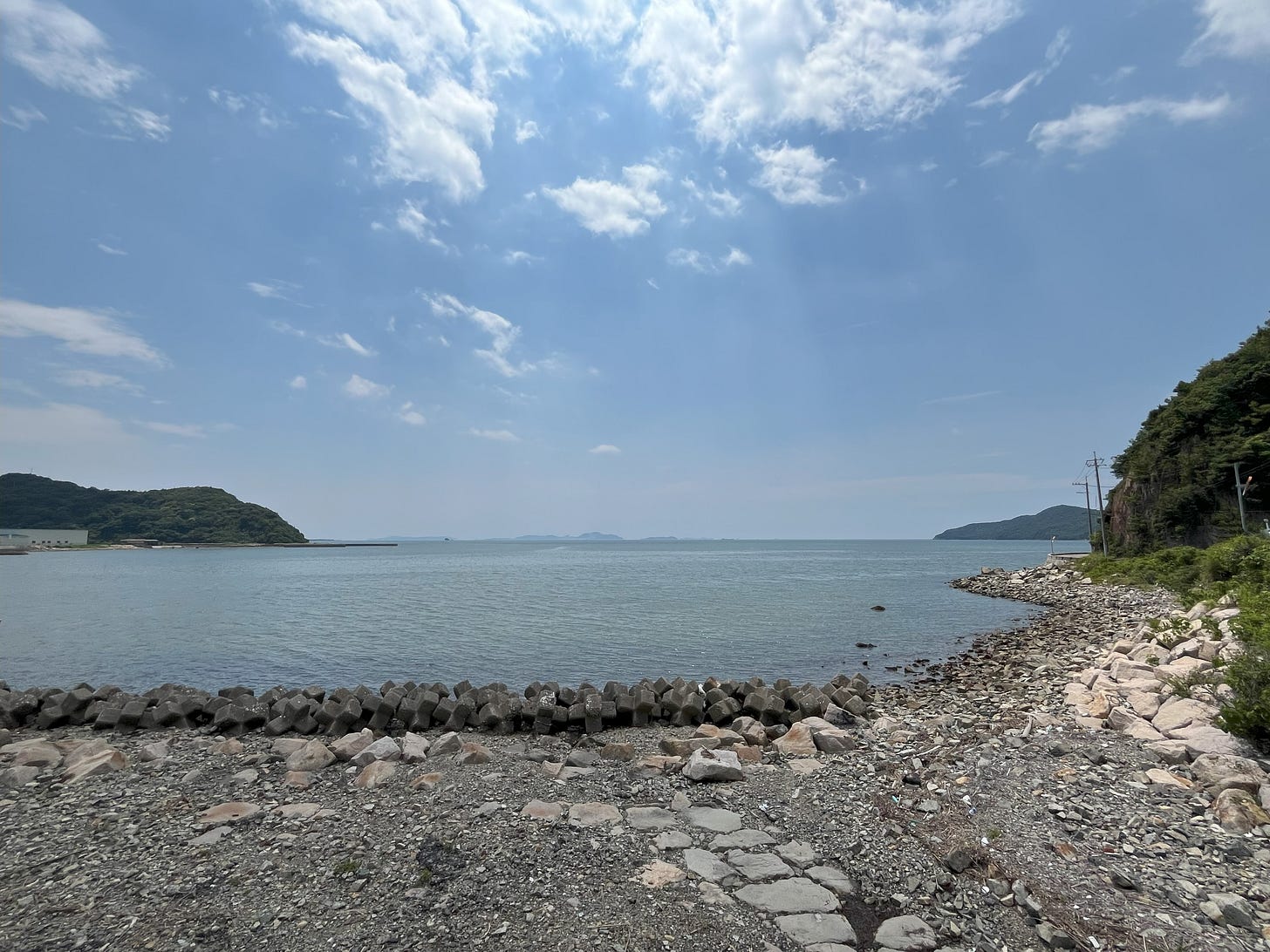
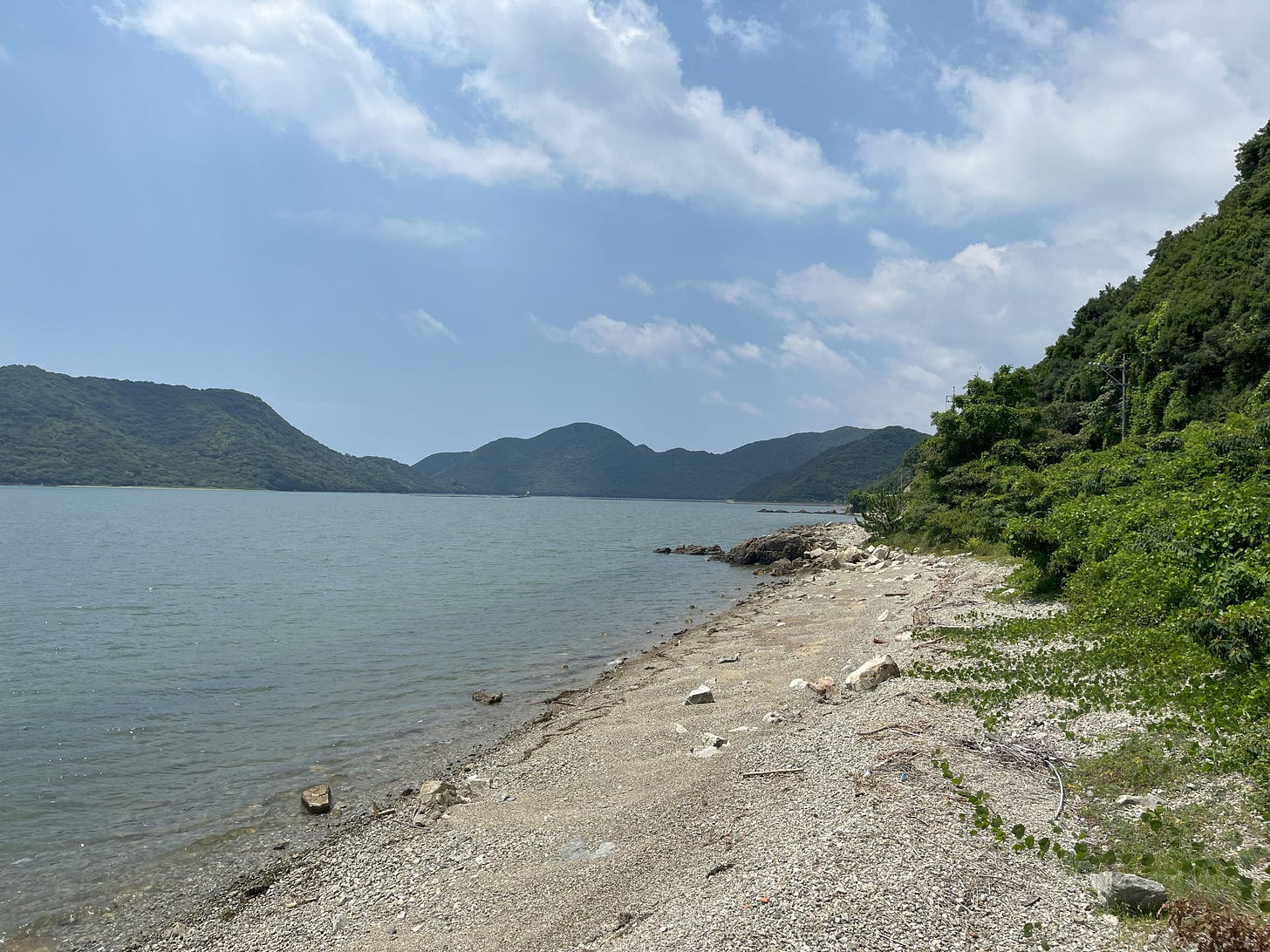
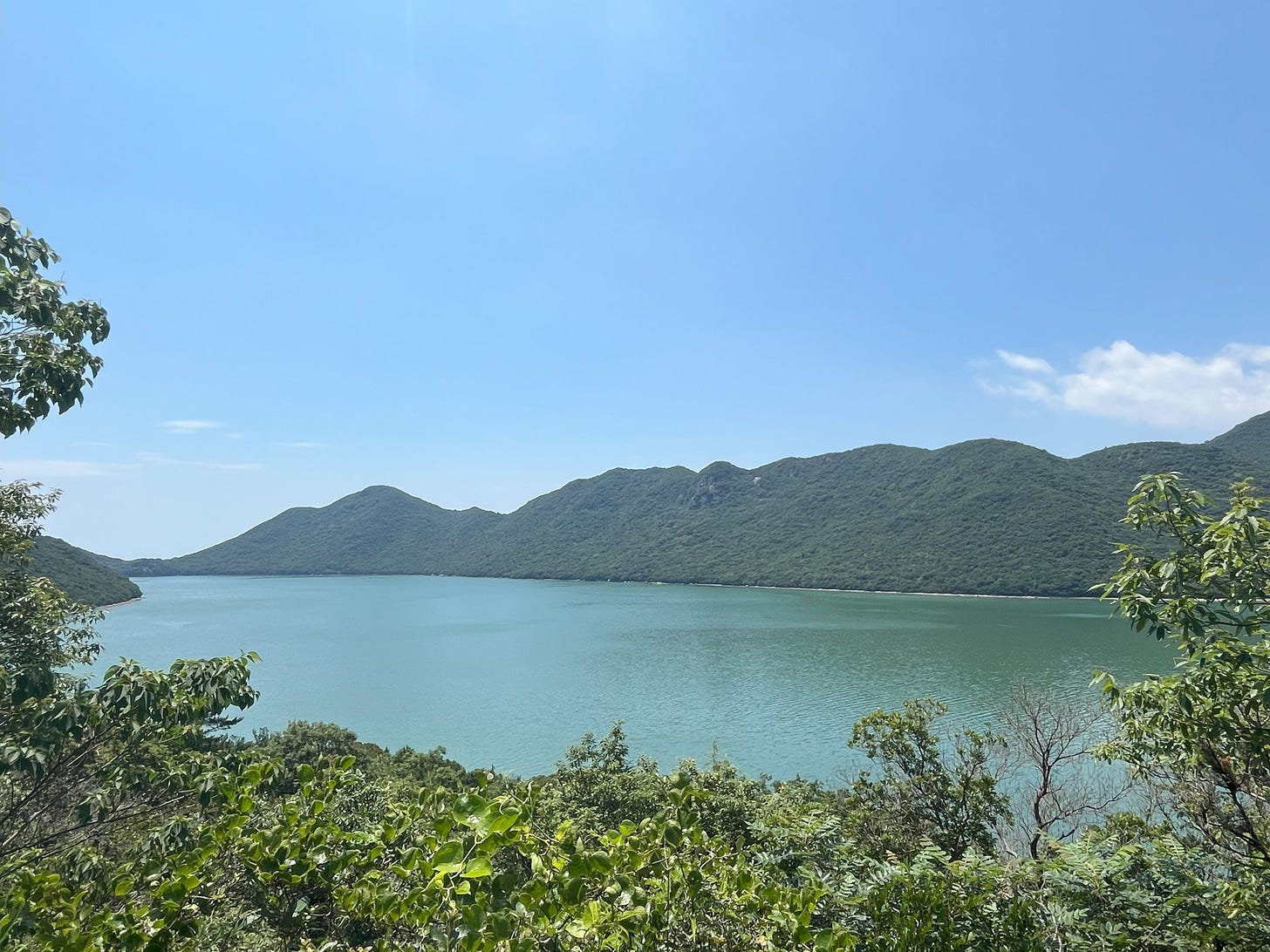
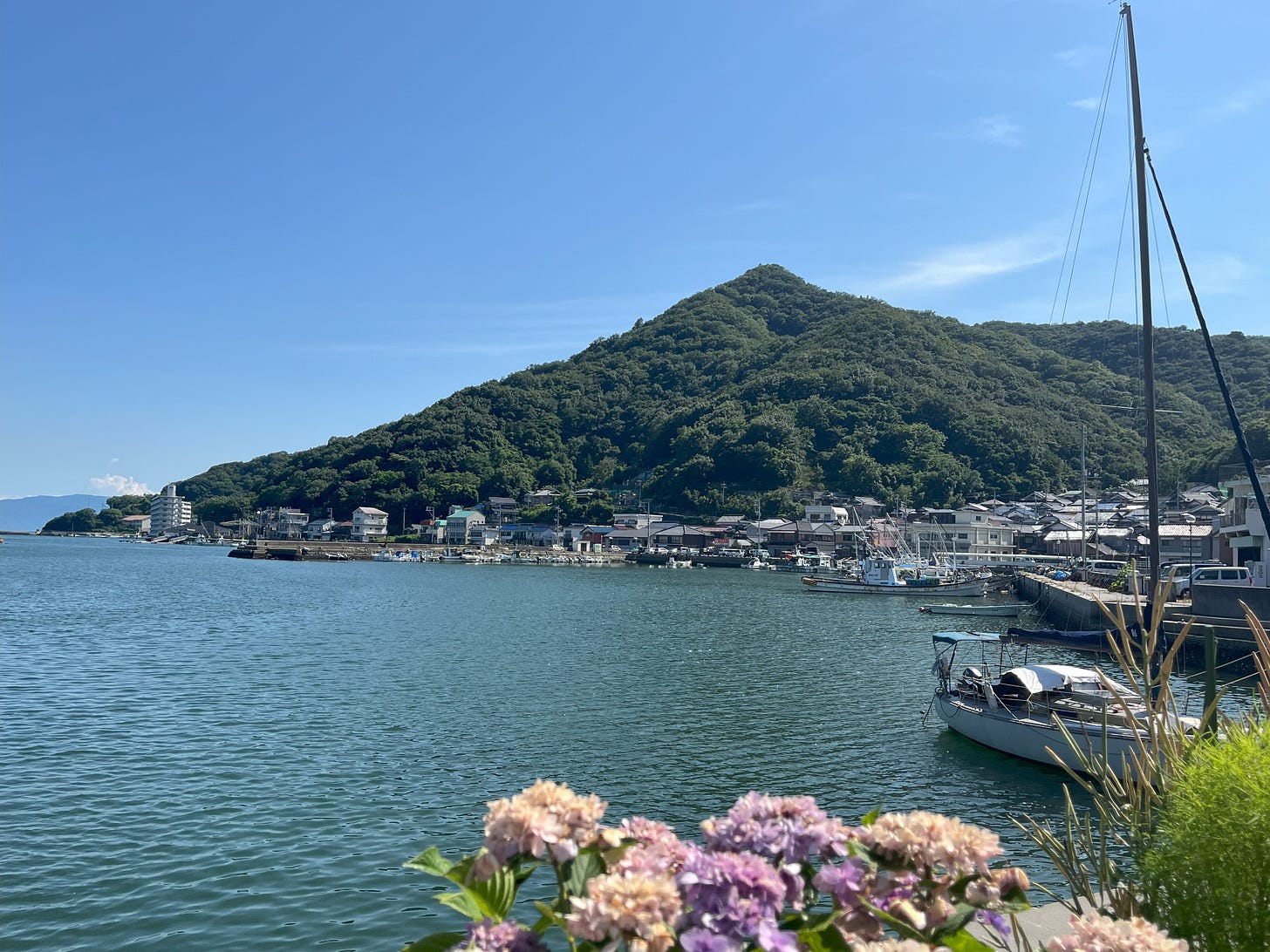
This was as engrossing, just like all your posts. I love all the creative details. This time I’d say I liked the cinnamon description best.